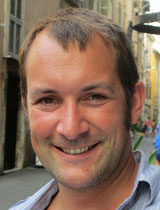 MSc, PhD (Otago)
MSc, PhD (Otago)- Paleomagnetism
- Paleoclimate/ocean reconstructions
- Antarctic climate evolution
Email christian.ohneiser@otago.ac.nz
Tel +64 3 479 7350
Google Scholar Christian Ohneiser
ORCID orcid.org/0000-0002-2781-2522
Research interests
My research focuses on reconstructing the history of Earth's climate system and geomagnetic field from sedimentary records on timescales of 10's to millions of years. The research involves expeditions on research ships around New Zealand and Pacific Ocean and to remote field areas in Antarctica.
I study sedimentary records and apply paleomagnetic and geochemical techniques to date sediments and reconstruct under what climatic conditions they were deposited. Recent paleoclimate studies demonstrate that past environmental changes have occurred quickly therefore we require techniques that can achieve centennial to millennial-scale correlations between sedimentary records separated by large distances and deposited millions of years ago. In parallel, environmental magnetic, geochemical and sedimentological studies can reveal changes in sediment source, erosion rate, and changes in ocean circulation such as current strength and direction.
Current research projects
Southern Ocean circulation reconstructions
Antarctica plays an important role in regulating earth's climate. The cold ice sheets interact with the ocean and are the powerhouse for global deep circulation which controls our weather and how heat is distributed around the world.
Antarctic Bottom Water (AABW) is a major component of the global thermohaline ocean circulation. Changes in its strength modify the global heat distribution and can have a direct impact on earth's climate. Deep waters at the Antarctic margin have warmed and freshened in recent decades, and export rates have slowed. We don't know if this is part of the Southern Ocean's natural variability or something new. I am working with other researchers to examine the long-term variability and sensitivity of AABW production to changes in the surface conditions. The aim is to determine the spectrum of natural (pre-industrial) AABW production variability in order to place the recent observations in a long term context. The tools we use include magnetic mineralogy and fabric studies to understand changes in deep current strength, sedimentologic studies to reconstruct ice rafted debris and organic geochemical studies to reconstruct ocean surface temperature.
Reconstruction of the Ross Ice Shelf history
The Ross Ice shelf is the largest floating ice shelf in the world but rising ocean temperatures and changing ocean circulation patterns in the Ross Embayment may cause it become unstable in the future. How quickly the ice shelf may retreat is unknown but geological reconstructions of the most recent retreat phase at the end of the last ice shelf can help put constraints on future retreat scenarios. This project uses short sediment cores collected from the Ross Embayment and from beneath the Ross Ice Shelf to date the most recent ice shelf retreat and reconstruct the oceanographic changes which have occurred since.
Research Under the Antarctic Science Platform
Global mean temperatures are increasing and will continue to do so until greenhouse gas emissions are reduced significantly. Antarctica's ice sheet are sensitive to subtle changes in temperature and have the capability to raise global sea-level significantly. Knowing how the Antarctic ice sheet will respond in the future is essential but to determine that we need to look at environmental records of how the Antarctic ice sheets and surrounding ocean have changed in the past. The multi-institution Antarctic Science Platform project 'Antarctic Ice Dynamics – Past, Present, and Future' uses a range of geological and geophysical techniques to investigate past changes and present-day ice sheet behaviour.
Visit the multi-institution Antarctic Science Platform website.
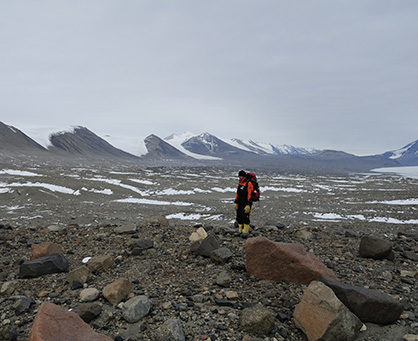
Field working the Lower Taylor Valley under the Qmap 22 geological mapping expedition. Photo: Dougal Townsend.
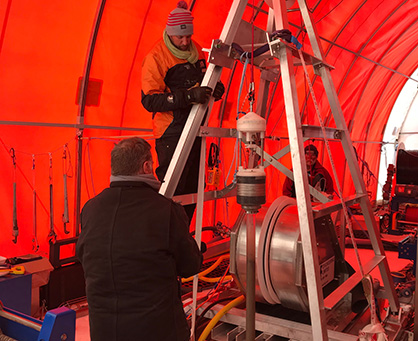
Sediment coring beneath the Ross Ice Shelf at HWD-2 for the NZARI Ross Ice Shelf Programme. Photo: Christina Hulbe.
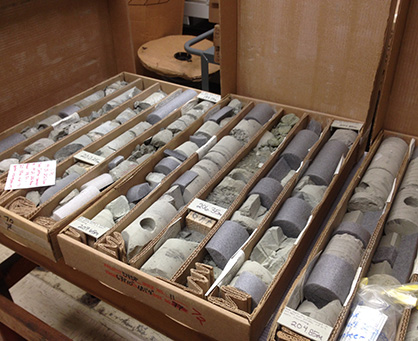
Sediment core sampling at Florida State University in Tallahassee.
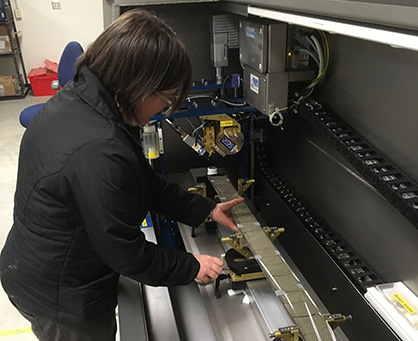
Core Scanning X-ray Fluorescence Analysis of Ocean Drilling Program Core 1101 at the IODP core repository in College Station Texas.
Research facilities
The Department of Geology has growing and complementary research capability which includes an analytical core repository, organic geochemical research facility and a paleomagnetic research facility. Additional facilities listed here.
The Otago Paleomagnetic Research Facility
The Department of Geology contains a state of the art magnetic research facility which include a superconducting magnetometer for measuring continuous and discrete samples and a vibrating sample magnetometer.
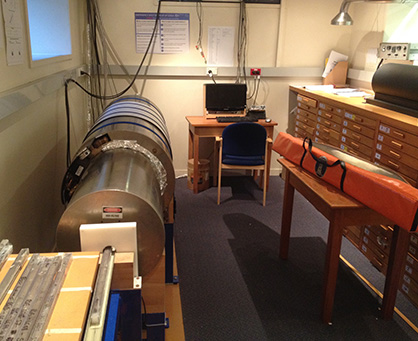
Postgraduate research opportunities
Are you interested in joining us for postgraduate study on sedimentary successions and paleoenvironmental reconstructions? We have several project opportunities waiting for you. The University of Otago offers scholarships to local and international students which cover tuition and provide a competitive stipend. For more information visit the Otago scholarships web page or email me for more information.
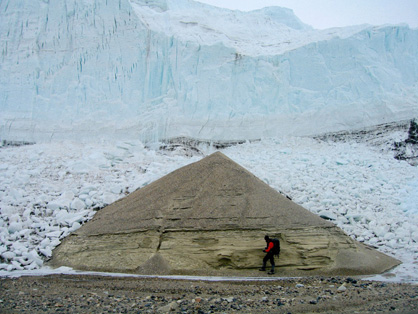
Sediment sampling At the Hogg Glacier, Antarctica.
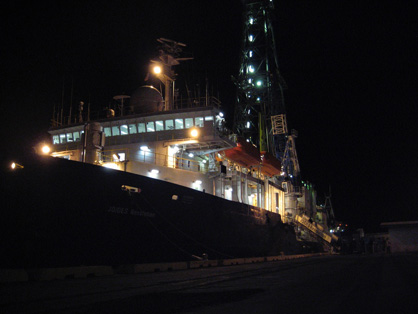
The RV Joides Resolution at night in Honolulu before departing on IODP Expedition 320.
Teaching
- EAOS 111 Earth and Ocean Science*
- GEOL 261 Geophysics of the Earth
- GEOL 361 Geophysics of the Earth
- GEOL 276 Geological Resources for a Sustainable New Zealand
- GEOL 376 Geological Resources for a Sustainable New Zealand
- GEOL 344 Advanced Field Studies*
- GEOL 471 Advanced Topics in Geophysics 2*
* Course Co‑ordinator
Publications
Ohneiser, C., Hulbe, C. L., Beltran, C., Riesselman, C. R., Moy, C. M., Condon, D. B., & Worthington, R. A. (2023). West Antarctic ice volume variability paced by obliquity until 400,000 years ago. Nature Geoscience, 16, 44-49. doi: 10.1038/s41561-022-01088-w Journal - Research Article
Ohneiser, C., Wilson, G. S., Beltran, C., Dolan, A. M., Hill, D. J., & Prebble, J. G. (2020). Warm fjords and vegetated landscapes in early Pliocene East Antarctica. Earth & Planetary Science Letters, 534, 116045. doi: 10.1016/j.epsl.2019.116045 Journal - Research Article
Stevens, C., Hulbe, C., Brewer, M., Stewart, C., Robinson, N., Ohneiser, C., & Jendersie, S. (2020). Ocean mixing and heat transport processes observed under the Ross Ice Shelf control its basal melting. PNAS, 117(29), 16799-16804. doi: 10.1073/pnas.1910760117 Journal - Research Article
Ohneiser, C., Florindo, F., Stocchi, P., Roberts, A. P., DeConto, R. M., & Pollard, D. (2015). Antarctic glacio-eustatic contributions to late Miocene Mediterranean desiccation and reflooding. Nature Communications, 6, 8765. doi: 10.1038/ncomms9765 Journal - Research Article
Ohneiser, C., Acton, G., Channell, J. E. T., Wilson, G. S., Yamamoto, Y., & Yamazaki, T. (2013). A middle Miocene relative paleointensity record from the Equatorial Pacific. Earth & Planetary Science Letters, 374, 227-238. doi: 10.1016/j.epsl.2013.04.038 Journal - Research Article
